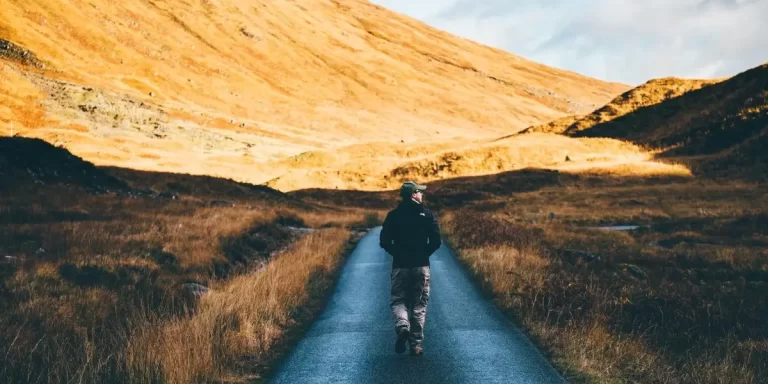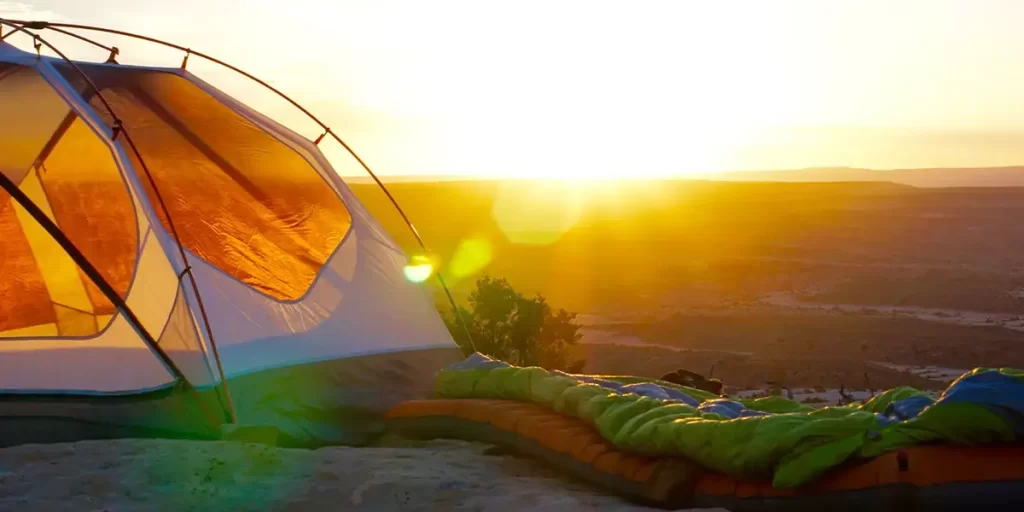

In the last decade, curiosity about ultralight backpacking with frameless backpacks and tarp tents has surged for good reason—simplifying outdoor adventures and keeping them clutter-free.
In this post we will cover everything you need to know about ultralight backpacking. Ready to learn more? Let’s delve in.
Ultralight backpacking focuses on reducing the weight of your gear to the minimum while keeping safety in mind. Ultralight backpackers typically aim to carry no more than 10 pounds (4.5 kg) of base weight, and we’ll explain this in more detail shortly.
This idea comes from the “less is more” approach, where you carry only what you really need. You might think this is a new concept, but it was actually discussed in a well-known book called “Woodcraft” by George Sears in 1884.
However, in the 21st century, ultralight backpacking has evolved and become more accessible to a wider audience.
Going ultralight offers many advantages over traditional heavy backpacking. Here are some of the major benefits:

Ultralight backpacking requires adopting a specific mindset and philosophy. Here are the core principles:
When discussing ultralight backpacking, certain terms are used to break down pack weights. Understanding these concepts is key:
A. Base Weight
Your base weight includes all gear except consumables. It’s the best metric for comparing ultralight loadouts:
| Category | Sample Weights |
| Ultralight base weight | <10 lbs (<4.5 kgs) |
| Lightweight base weight | <20 lbs (<9 kgs) |
| Traditional base weight | >25 lbs (>11 kgs) |
B. Worn Weight
Worn weight is clothing and items worn while hiking. Some ultralight hikers minimize worn weight, but most just focus on base weight:
C. Consumables
Consumables are food, water, and fuel. They depend on trip length so aren’t included in base weight.
D. Total Pack Weight
Your total pack weight is your base weight and consumables combined. While important, it’s less useful for comparisons.

Transitioning to ultralight backpacking takes some adjustment. Here are tips for new ultralight hikers.
Knowing your starting point is crucial. Use LighterPack to keep track of your gear and its weight.
Carefully chosen ultralight or lightweight gear is at the core of ultralight backpacking. Here’s an overview of key items:
To cut pack weight, focus on the ‘Big Three‘ – your pack, shelter, and sleep system. Here are some example options to see where you can make the biggest difference:
1. Shelter Options
| Type | Weight | Notes |
|---|---|---|
| Tents | 1 – 5 lbs (450-2200g) | Opt for lightweight solo tents. Learn more here |
| Hammocks | 1 – 2 lbs (450-900g) | Require additional accessories |
| Tarps | 1 – 2 lbs (450-900g) | Versatile and ultralight, not for beginners |
| Bivys | 12 oz – 2 lbs (340-900g) | For extreme minimalists, not for beginners |
2. Sleep Systems
| Type | Weight | Notes |
|---|---|---|
| Bags | 1 – 3 lbs (450-1250g) | Higher fill power for lighter warmth |
| Quilts | 1 – 2 lbs (450-900g) | Often lighter then sleeping bags |
| Pads | 9 oz – 2 lbs (260-900g) | Ample lightweight options due to new tech |
3. Backpack Types
| Type | Weight | Volume | Notes |
|---|---|---|---|
| Framed | 2 – 5 lbs (900-2200g) | 50 – 80L | Structured; good for heavy loads |
| Frameless | 1 – 2.5 lbs (450-1000g) | 30 – 60L | Less structure; for lighter loads |
| Daypacks | 8 – 28 oz (225 – 800g) | 15 – 35L | Minimal; for short trips |
Next to the ‘Big Three‘, food plays a major role in the overall weight of your backpack.
A minimalist cookset plus water gear is standard:
Layering with versatile pieces reduces clothing weight. Just bring essential insulation, wind protection and rain defense:

Going ultralight isn’t for everyone. Consider these key factors when deciding:
In closing, ultralight backpacking represents a dramatic shift towards minimalist gear and ethics in order to achieve vanishingly small base weights.
While not for everyone, adopting an ultralight approach can profoundly enhance the wilderness experience for avid hikers willing to embrace a spartan, minimalist ethos.
The key is making gradual changes, always maintaining safety, and downsizing the “Big Three” first. With meticulous gear selection and planning, base weights under 10 pounds (4.5 kg) enable unburdened freedom on the trail.
Transitioning to ultralight requires sacrifices, but pays dividends in terms of faster hiking, lower fatigue, and a deeper connection with nature.
Ultralight backpacking is a strategy for hiking and camping that emphasizes keeping your gear as lightweight as possible, typically around 10 pounds or less. This approach involves selecting lightweight, versatile equipment and packing only the most essential items. For instance, some ultralight backpackers might opt for a tarp instead of a traditional tent, which reduces weight while still providing adequate shelter from the elements. This focus on minimalism enables hikers to cover more ground with less effort, experience less fatigue, and enjoy the outdoors more fully.
When it comes to selecting a backpack for ultralight backpacking, the ideal capacity typically falls within the 35-45 liter range. This size is well-suited for a 3-4 day hike with resupply options, providing enough room for essential gear while remaining lightweight. However, for longer hikes or trails with no resupply options, we recommend opting for a backpack with a capacity exceeding 45 liters.
Certainly! When it comes to learning more about ultralight backpacking, there are excellent resources and guides available. One highly recommended resource is the “Ultralight Backpacking Bible” by renowned outdoor adventurer, John Everest. This comprehensive guide covers everything from selecting the lightest gear to efficient packing techniques and trail etiquette.